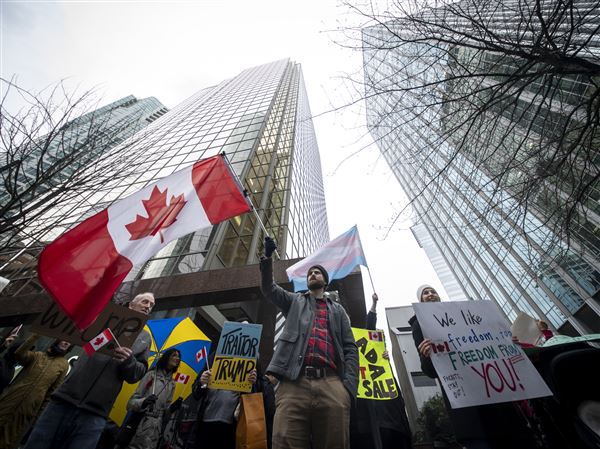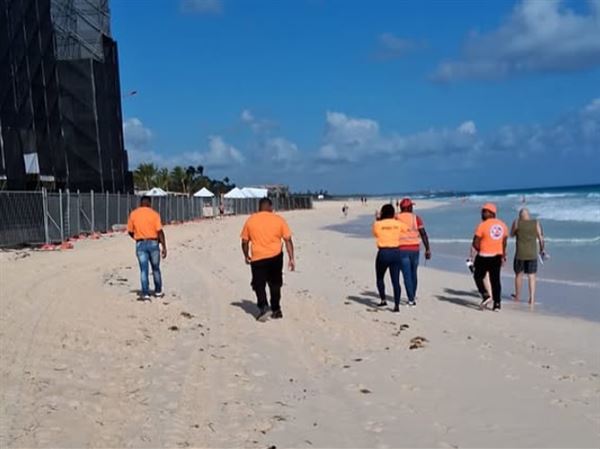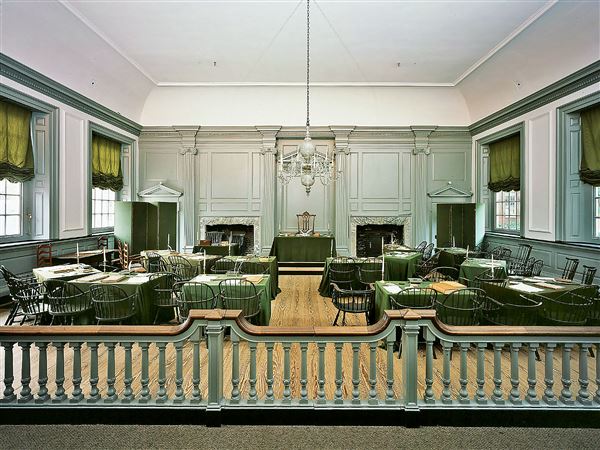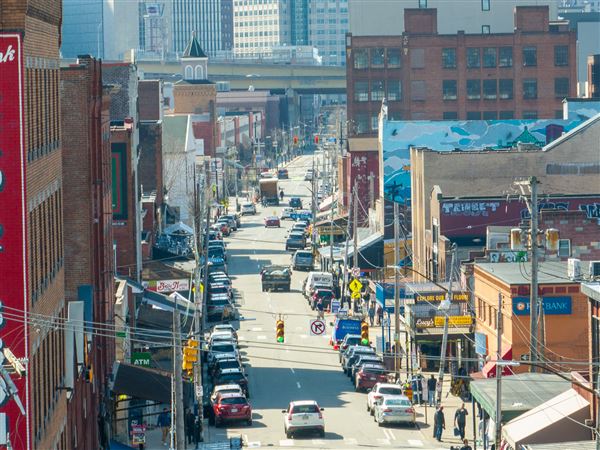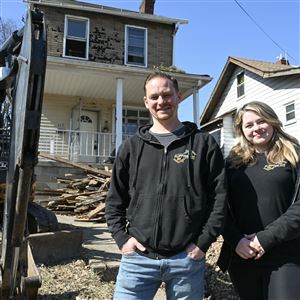Renovating and reviving the North Side’s Allegheny Center as Nova Place has required five years and $127.5 million. Now the 1.2 million-square-foot complex will be reconnected to the street and surrounding neighborhood by steps and an outdoor plaza.
Construction of the new entrance, which will face South Commons and Federal Street, began in October and is expected to be finished in June. A small park with trees and benches will include a ramp for people with disabilities.
For Jeremy Leventhal, a principal in Faros Properties, the bet he made on an ill-conceived urban mall with offices and apartments may finally be paying off. There’s a waiting list for Park View Apartments, the four buildings Faros Properties renovated and renamed after buying the former Allegheny Center residences in 2013.
Two years later, the developer bought the shopping and office complex. Now Nova Place has a co-working space called Alloy 26; Union Fitness, a 5,000-square-foot gym; Federal Galley, a 6,000-square foot food hall with four restaurants and a bar; the Radiant Hall art studio; and CoLab 18, a digital literacy center for local residents.
The 500-foot-long shopping mall, opened in 1966, was “an open wound to the complex” said Jeff Young, a principal with architects Perkins Eastman.
The architectural firm designed nine “huts” — tall, tubular steel structures framed by wooden slats — for meetings, informal gatherings and as places where office workers can take a quiet break. The structures were placed in the two-level mall’s long concourse to reduce its scale, Mr. Young said.
Much of the glass-enclosed office space on the lower level is hidden behind colorful images of Pittsburgh’s bridges and cultural events. The graphics, by Kolano Design, conceal offices for AT&T, Lightower and Experian.
The second level of the former mall is an indoor walking track. Colorful flags show the distance to nearby landmarks like the Rivers Casino or Point State Park. Four oversized aluminum fans -— each 10 feet in diameter -— hang from the barrel-vaulted ceiling and circulate air. Eyebrow-shaped clerestory windows allow natural light into it.
Tom Chidlow and Anastasia Markiw, architects at DesignGroup, are two happy tenants. The 13-foot high windows in their 2,500-square-foot office afford a view of mature trees while two conference rooms overlook an outdoor plaza with a large wooden pergola, plants and a small stage. The architects’ office is a short walk from the Federal Galley food hall.
“We have several hundred thousand feet of office space available out of over 1 million total,” Mr. Leventhal said.
When the complex was built, its eastern half was engineered so that four more stories could be added. Construction costs for the apartment buildings, mall and offices were $50 million in 1966 — $389 million in today’s dollars.
Since acquiring the property, Faros Properties has signed or renewed more than 750,000 square feet of office space.
The 3,000-space parking garage has been painted and new lighting installed. Old escalators from the garage to the mall were removed and replaced with a new staircase.
“We wanted to remove the stench of old retail,” said Jeremiah Brooks, an architect with Stantec Architecture, the firm that replaced the escalators with a bright green and white staircase.
Stantec also designed the new outdoor plaza slated to open next June.
The last hurdle for Nova Place is eliminating a one-way ring road that has deterred motorists since the complex opened 52 years ago. Sometime next year, perhaps, they may be able to drive both ways.
“The city is in advanced planning stages to create dual traffic in both directions,” Mr. Leventhal said.
Diana Bucco, president of the Buhl Foundation, said an earlier study did not account for the dramatic daily increase in traffic since Nova Place was renovated and the parking garage improved. Residents of 18 North Side neighborhoods have asked for two-way traffic.
“It’s much more business-oriented rather than retail. It’s taken us this long, so we want to get it right,” Ms. Bucco said.
Two-way traffic will affect businesses, churches, schools, and cultural venues like the New Hazlett Theater and the Children’s Museum, she said. “There will be some traffic backup.”
Mark Fatla, executive director of the North Side Leadership Conference, said two-way traffic will be safer for everyone.
“There’s another lane of traffic in the opposite direction, so you will generally go slower. That means it’s safer for pedestrians, safer for bicyclists in the bike lane, safer for other cars and easier to park. Why is that? Because it operates more like a city street than a racetrack,” Mr. Fatla said.
Marylynne Pitz: mpitz@post-gazette.com, 412-263-1648 or on Twitter:@mpitzpg.
First Published: November 5, 2018, 1:00 p.m.

